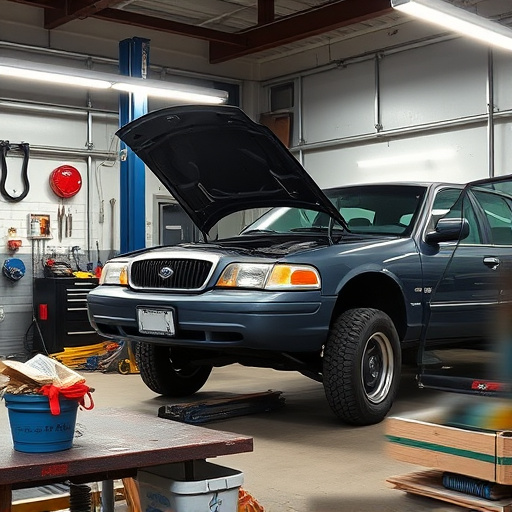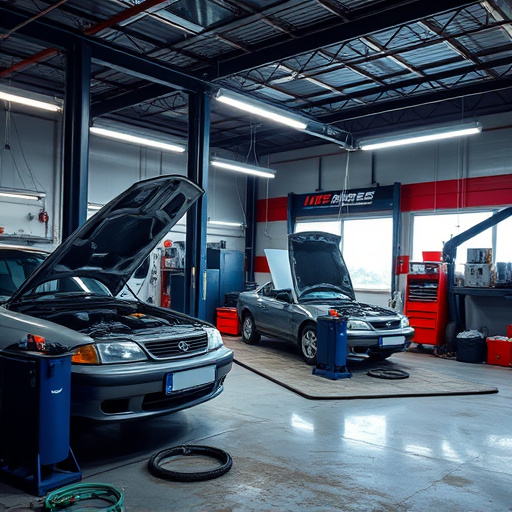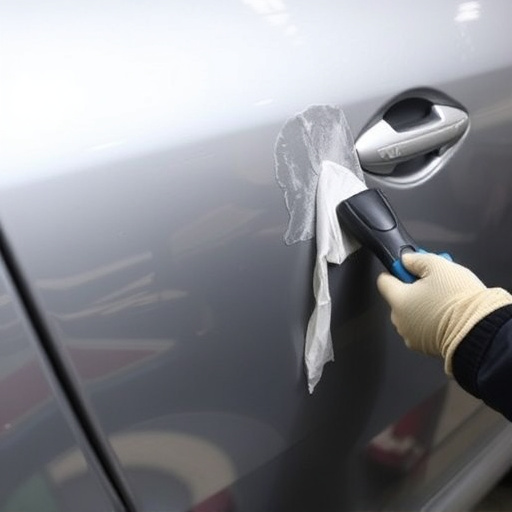Regular Tesla thermal management checks are crucial for maintaining optimal vehicle condition after storage, especially in extreme climates. These checks involve evaluating temperature regulation during diverse driving scenarios and scrutinizing key components like radiators, cooling fans, and heat exchangers. Auto body services focus on preventing heat-related issues, prolonging the lifespan of both modern electric vehicles and vintage classics through targeted inspections, repairs, and maintenance practices.
After long-term storage, a thorough Tesla thermal management check is crucial. This article delves into assessing the vehicle’s thermal performance, exploring key components of efficient systems, and providing effective strategies for optimization. Understanding and maintaining optimal temperature regulation not only enhances battery health but also ensures top-tier vehicle performance post-storage. Key focus areas include identifying potential issues, enhancing heat dissipation, and implementing post-storage optimization techniques to ensure your Tesla operates seamlessly.
- Assessing Tesla's Thermal Performance After Storage
- Key Components in Thermal Management Systems
- Effective Strategies for Post-Storage Optimization
Assessing Tesla's Thermal Performance After Storage

After a long storage period, assessing Tesla’s thermal performance is crucial to ensure optimal vehicle condition. A thorough Tesla thermal management check involves evaluating the car’s ability to regulate its internal temperature during various driving conditions. This includes examining components like radiators, cooling fans, and heat exchangers to ensure they function efficiently.
For classic car restoration enthusiasts or those considering long-term storage, regular auto body services and checks are essential. These steps help prevent issues related to heat buildup, which can cause damage to sensitive electrical systems and components. By addressing thermal management early, vehicle owners can extend the lifespan of their Teslas and ensure a smooth driving experience, regardless if it’s a modern electric vehicle or a vintage classic.
Key Components in Thermal Management Systems

The thermal management system within a Tesla vehicle is a complex network designed to maintain optimal operating temperatures for both passenger comfort and engine performance. Key components include the radiator, which cools the liquid cooling system, and the A/C condenser that further reduces temperature using compressed refrigerant. These are supported by fans and pumps that circulate coolant and refrigerants respectively, ensuring efficient heat transfer.
For vehicles stored for extended periods, a thorough Tesla thermal management check becomes crucial. This includes inspecting the condition of these components to ensure they function effectively after long-term inactivity. Regular maintenance and timely repairs, whether for a fleet repair service or a specialized Mercedes Benz collision repair, are essential to prevent issues like overheating, especially in regions with extreme climates. Automotive collision repair experts can play a vital role in identifying and rectifying any thermal management system defects, ensuring your Tesla remains in top condition even after prolonged storage.
Effective Strategies for Post-Storage Optimization

After a long storage period, optimizing your Tesla’s thermal management system is crucial for peak performance. A thorough checkup should include examining the vehicle’s cooling components such as radiators, heat exchangers, and fans to ensure they’re functioning optimally. This process involves checking for any leaks or blockages that could hinder efficient heat dissipation.
Effective strategies for post-storage optimization encompass a range of auto body services tailored to Tesla needs. These include professional mercedes benz collision repair techniques to rectify any structural damage and re-sealant applications to preserve the vehicle’s thermal barriers. Regular washing and detailing also play a role in maintaining optimal thermal management by preventing debris buildup that could obstruct airflow. Additionally, ensuring the integrity of the car’s underbody coating can significantly reduce heat absorption, thereby enhancing overall thermal control.
After considering the critical role of Tesla’s thermal management systems in vehicle performance and longevity, especially after long-term storage, it’s clear that a thorough Tesla thermal management check is an essential step for any owner. By understanding key components and implementing effective post-storage optimization strategies, you can ensure your Tesla remains in peak condition, ready to hit the road with confidence.














